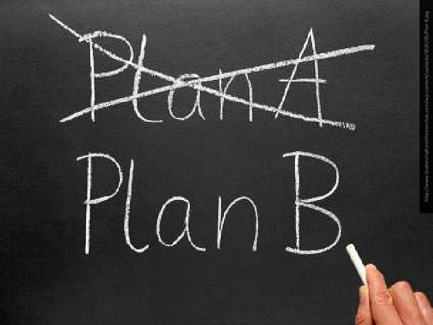The global economic meltdown continues to be in freefall, with no end in sight. The mean common denominator is that securities markets keep getting sold off to lower and lower levels, there is no confidence that the government’s vigorous action is doing much to stop the hemorrhage, and fear grips the world. This is your worst nightmare. Who would have guessed even two years ago that we were headed into this mess? I have all been losing sleep about it for at least eight months, perhaps you have too. Yet, we Americans tend to have an enduring sense of optimism that we will manage to get through all of this OK. And we will. Eventually. But what happens until then? As the bottom line keeps falling, certain inevitabilities have become clear. This situation was eloquently discussed in the Week in Review section of the February 8 Sunday New York Times in a lead article by David Segal, entitled, “PLAN B: It Used to be the dream option. Your life after you ditched this one. Voluntarily.” The key ideas in this article, about how the global financial crisis impacts our lives and future plans, are important enough that I am choosing to discuss them this month in my own op-ed piece. The entire concept makes for a powerful coaching opportunity. Most of my clients are mid-career physicians who have been saving for retirement for at least 20 years. That savings may have taken many forms, including 401-K’s, IRA’s, Pension and Profit Sharing Plans, real estate investments, business investments, money under the mattress, and many other similar vehicles. As a result of our hard work and planning, essentially all of us have all had a “PLAN A”, our personal and family vision for our retirement years. Although each of us may have had a unique vision for our retirement years, we all have had a PLAN A. For the most part until recent events, we seemed to be moving progressively toward that vision. Some slower, some faster, but we were all making progress. We also were living a current PLAN A with respect to our professional careers. Many of us never considered the need for a PLAN B Career vision. That having been said, many CPPR clients have developed a PLAN B Career plan as the result of any one of many different reasons which brought each of you to the coaching process. That Plan B is currently being actuated by many of you as part of your coaching plan. Indeed, many of my clients have simultaneous PLAN A’S AND PLAN B’S working concurrently. (The “Portfolio Career” that I talk about, and model in my own professional life.) What David Segal points out in his NY Times feature, is that for many of us, the events of the past 16 months have effectively wiped clean the RETIREMENT PLAN A we have all been working so hard to fund. At least for a large percentage of us. Despite our own strong denial, and the anger provoked by realizing how we have been fleeced by the high flyers, the CEO’s and investment bankers on Wall Street, the time has come to begin dealing with the havoc the financial meltdown has created for our FUTURE. Wallowing in anger and self-pity is not a good strategy for survival in times such as this. The loss of from 25% to 50% of our retirement portfolio will not be corrected anytime soon. For those of us over the age of 60, our losses may not be recovered prior to our reaching our mid to late 60’s, maybe even later. No one knows how long it will take. (The losses of the 1929-1933 Great Depression years took 15 years to recover, and then only because of a World War.) While world economic drivers are different today than in 1933, and protections exist in financial markets that did not then, we must never-the-less begin to re-assess our financial futures, and begin taking active steps to re-vision what is still possible, and what is NOT possible. AND, there will be strong emotions to contend with as we begin doing this work. I recognized the need to re-evaluate my retirement goals last October, after my own retirement assets had fallen by 28% in 9 months. I had a series of conversations with my financial advisors, rebalanced my retirement portfolio to reflect my increasing risk-aversion and increased desire for financial safety. Simultaneously last Fall, my wife and I began a detailed prospective recording of our monthly expenses (for four months) and have now used that data to recalculate our annual living expenses. Based on those numbers, we are now revising our timeline to retirement, revising our definition of what “retirement” is going to look like, and beginning to deal with the reality that we will have to wait longer, continue to work longer, and have less money to spend during our retirement years than we had anticipated. Not a pretty picture. And yes, it is discouraging. The important thing, however, is that we are DEALING WITH IT, not pretending there isn’t a problem. And, as my wife is prone to remind me, despite how ugly things may look today, we have each other to love and cherish, we still have our jobs, we will always be employable in the healthcare industry, we still have our health, and we will get through this together. If we are very fortunate, the old PLAN A may still get resurrected, perhaps just a few years later than planned. (Right now that looks like a pretty big, “Maybe”.) We just can’t plan on it happening anytime soon, if ever. Instead, what Susan and I are doing is CREATING OUR RETIREMENT “PLAN B.” All of us in Medicine (and indeed in all professions) must begin to create a RETIREMENT PLAN B. For many of us with a short time horizon to retirement, our PLAN A is dead. We must grieve that, have and process our feelings about it, and then let go and MOVE ON. Life is still full of promise, but we may have to substantially change our thoughts about what we want our lives to look like in retirement. How are you managing your RETIREMENT PLAN B? If you have not yet begun to think about it, now is the time. Do what you need to do to protect what is left of your estate while you still have one. Use trusted financial and legal advisors to help you. Spend whatever resources (time and money) that you must, so that you are protected, so that your risk profile is revised, if necessary, so that you can sleep at night, and so that you are positioned optimally to recover when world financial markets begin to recover.
You need a RETIREMENT PLAN B for your retirement years just in case. Do you want to continue to do what you are doing now career-wise in retirement? Where will you live? How will you spend your time? How will you find fulfillment? Do you need to modify financial commitments to others in order for you to succeed in your new PLAN B? Now is the time to begin making those decisions.
I encourage you to read the Segal feature in the Feb 8, 2009 NY Times. You can find it easily by going to the NY Times website: www.NYTimes.com and search using David Segal, January 8,2009 and Plan B as search words. So, DO YOU HAVE A PLAN B??. I am willing and prepared to work with you to create your PLAN B!!

